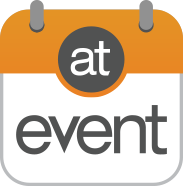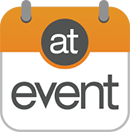We want you to come to the atEvent "In the Lead" blog to meet different influencers and trendsetters who are shaping the face of the event industry. So each month our team will be interviewing a different expert from all walks of the event industry -- event agency owners, brand marketers, lead gen and tech event experts, etc. -- to learn about their background, as well as what they're seeing out there in event land.
This month's featured guests were Lori Hart and Melissa Arocha, co-founders of the highly successful NYC-based event marketing agency Silhouette Group.
Here's what Lori and Melissa had to say!
1. Please tell us a little about the Silhouette Group?
Silhouette Group is an award winning event planning, design and lifestyle marketing company based in New York City. We execute events worldwide for brands such as American Express, Disney, Sephora, Mercedes-Benz Fashion Week, Project Runway, Nicole Miller, Taylor Swift, Elizabeth Arden, The GRAMMY Foundation, Formula 1 and a number of Fortune 500 companies in the financial sector. We specialize in luxury client entertainment programs, product launches, fashion shows, corporate conferences, non-profit events, galas, experiential marketing campaigns and destination management programs.
At the 2013 International Special Events Society (ISES) Big Apple Awards, our events received 8 nominations over 6 categories and won the Best Social Event and Best Room Design awards. Our event designs have also been finalists at the BIZBASH New York Event Style Awards.
2. How many events a year does your group handle?
Silhouette Group handles roughly 25 events a year, with a number of smaller projects.
3. What is the average event size?
Our events size varies based on the type of event we are producing. When producing an editorial event for a product launch for one of our beauty or fashion clients the events tend to be more intimate with smaller groups of roughly 50 or less. Our corporate, social, non-profit, destination management and client entertainment programs usually fall between 200 - 500 attendees while our celebrity fragrance launch’s have had thousands in attendance.
4. Which events top your list and why?
Our top three events over the past few years have been the welcome celebration for the Formula One community in Austin, Texas; the simultaneous launch of the Sephora Holiday Editorial Line and the Disney Cinderella Collection by Sephora; and Asia Society’s “Celebration of Asia Week” Gala.
Each event provided us with a unique opportunity to engage and capture three very different audiences - the elite global community of Formula One, the Beauty Editors at the Sephora event, and the diversified patrons and supporters of the Asia Society - in a way that matched the various objectives, themes and goals of each program. Whether creating a cliff side fashion show atop an infinity pool with a surprise performance by John Legend, a colorful winter wonderland with jeweled snowflakes and actual snow, Cinderella’s bedroom post-princess, or a 1930’s Shanghai nightclub, we successfully tailored the event to cater to the attendees and objectives at hand.
5. What are some of the biggest pain points that marketers experience when it comes to events?
Living in a climate over saturated with social media, it has been a challenge for brands to grab and hold the attention of their target demographic. Consumers are constantly being bombarded with brands, ads, coupons, etc. via TV, print, digital and social media. Events bring back the touch points that many brands are missing providing platforms and experiences that strengthen the relationship between the brand and the consumer. Through the unique experiential marketing programs we create for our clients we have been able to garner brand support and loyalty both internally and externally.
One additional pain point that marketers experience has been the inability to track the results of an event and in turn the ROI. If willing to allocate the proper money from the budget, event marketers can now embed technology to track an event’s success with quantifiable results.
6. What would you say are the top three items companies are looking for when they host an event?
Generally speaking, for an experiential marketing campaign, I would say they are looking for brand awareness, to gain loyalty, and ultimately a quantifiable return on their investment.
7. What technology trends are you seeing in the event industry and what are some issues you are seeing around lead generation at events?
Social media platforms such as Vine, Twitter, Facebook, Instagram have created a paramount responsibility of the Event Marketer to maintain the integrity of the messaging and brand from a 360-degree perspective. While it used to be that you were able to control and contain the experience and visual stimulation, now you have to design and plan with the thought process that at any moment, and vantage point, a photo can be uploaded or a tweet sent that lacks the quality control previously present before social media. Accurate branding and messaging is critical and all precautions need to be taken to make sure the correct message comes across to the guests. Our processes have been re-imagined with a new solid approach taking into consideration all the various touch points throughout an event that could lead someone to share their experience. It starts from the moment the guests arrive until they depart, and encompasses every possible angle and vantage point to ensure that proper messaging is present, if shared. This enables our clients to reap the positive benefits of current technology trends and platforms in a strategically created event environment.
Technology is no longer considered an added or optional component within an event budget but rather an integral and definitive element and tremendous opportunity if utilized well. Embedding the proper social media components and use of technology within experiential marketing programs ensures higher levels of success and reach while capturing the attention and in turn loyalty of consumers.
8. What are the most common mobile apps that you see attendees utilizing and why?
The most common mobile apps we see attendees utilizing are typically the apps most frequently used in their day-to-day lives such as Instagram, Vine, Twitter and Facebook. When participating in a live event, attendees fall back on what’s comfortable and familiar, so we just create an environment conducive to such usage to ensure success.
9. Can you give us 2-3 predictions on how the event industry will evolve over the next 12 months?
We believe there is going to be a tremendous upswing of experiential campaigns allowing consumers to feel and experience an emersion into a brand. There will be a wave of ‘going back to the basics’, if you will. We predict that marketers more and more will have earmarked in budgets for the creation of live events and brand experiences and will veer away from on-line only campaigns.
We think it is going to be interesting to see the ways in which the ever-evolving world of technology and social media will influence our industry in the future. We believe it will become the explicit responsibility of Event Marketing firms to be ‘in the know’ of all the cutting edge technologies and social platforms that can be creatively embedded and utilized within an event. This will ensure the highest level of success within their experiential marketing campaigns with a quantifiable ROI.
Bloggers are becoming more and more an integral part of events. We believe that there will be an increase in demand for Event Marketers to create blogger specific events and experiences.








